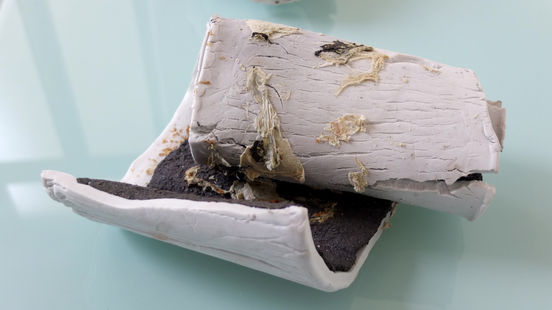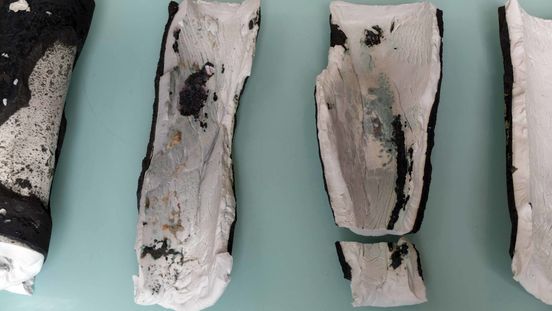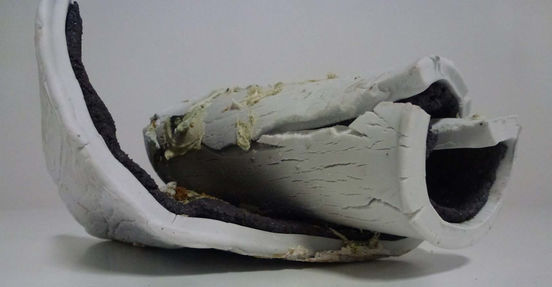In this body of work, Jess Paraone (Ngāti Kawau, Kaitangata) has formally engaged with risk-taking as part of her practice. By creating ceramic objects that comprise both raku and porcelain clay – she breaks the rules of ceramic studio production. Delighting in pushing her chosen materials to their limit – she explores their qualities of strength and fragility. The element of unpredictability is celebrated as part of her making process and establishes the basis for further investigation.
Paraone has noted that she is interested in challenging convention in the domain of ceramics by working simultaneously with clay types that have very different histories. Raku clay, often associated with studio craft, is easy to shape and demonstrates durability in being able to withstand fluctuations in heating and cooling during the firing process. Its low- firing temperature means it is fragile, porous and unsuitable for using with food. Porcelain clay is much tougher and traditionally associated with refined and smooth surfaces; it requires a higher firing temperature to mature. Clay is strongest when fired to its optimum temperature and a single firing is likely to compromise the strength of one or both clay bodies. By experimenting with the order of the layers, Paraone tests the characteristics of strength and fragility in both bodies and their ability to hold a shape.
Initially, the repetitious and emphatic sequencing of a limited palette: black and white, white and black, black, white, black seems to defy the "in-between and transitory" qualities suggested by the title Liminals. On closer inspection however, there are subtleties in the colour, nuances in the forms and qualities in the materials. Some of the globs and splotches marking the surface have been made using unconventional materials such as packaging; one can almost "hear" the artist questioning: "what happens when I do this or use that?" In the same way that her style of mark-making celebrates randomness, Paraone embraces ensuing flaws and faults in the process of investigating materials through the repetition of forms. The shapes created by rolling the slabs are not fluid or elegant forms; the surfaces clearly reflect the limits to which the materials have been pushed. Multiple cracks and fissures are evident and in some instances the pieces have actually cracked apart. The process of exploration rather than a focus on resolving form is at the heart of Paraone's work. She states: "Rather than seeking to control the outcome, often a necessary part of fabricating sculpture in this medium, I choose to court failure as a working principle..."
Paraone's forms are open-ended and to some extent so is the interpretation of her work. Her focus on materials and process, as well as the pairing of clay types and forms invite multiple readings that prompt consideration of subject matter relating to cycles and constraint, hierarchies and history within the domain of art and craft, perhaps even the state of race relations in New Zealand – a state of uneasy co-existence as opposed to idyllic harmony?
--
In 2013, Jess received an MFA from Whitecliffe College of Art and Design. She is also an accomplished weaver who is represented in galleries throughout New Zealand.

Jess Paraone, Liminals, 2014.

Jess Paraone, Liminals, 2014.

Jess Paraone, Liminals, 2015.